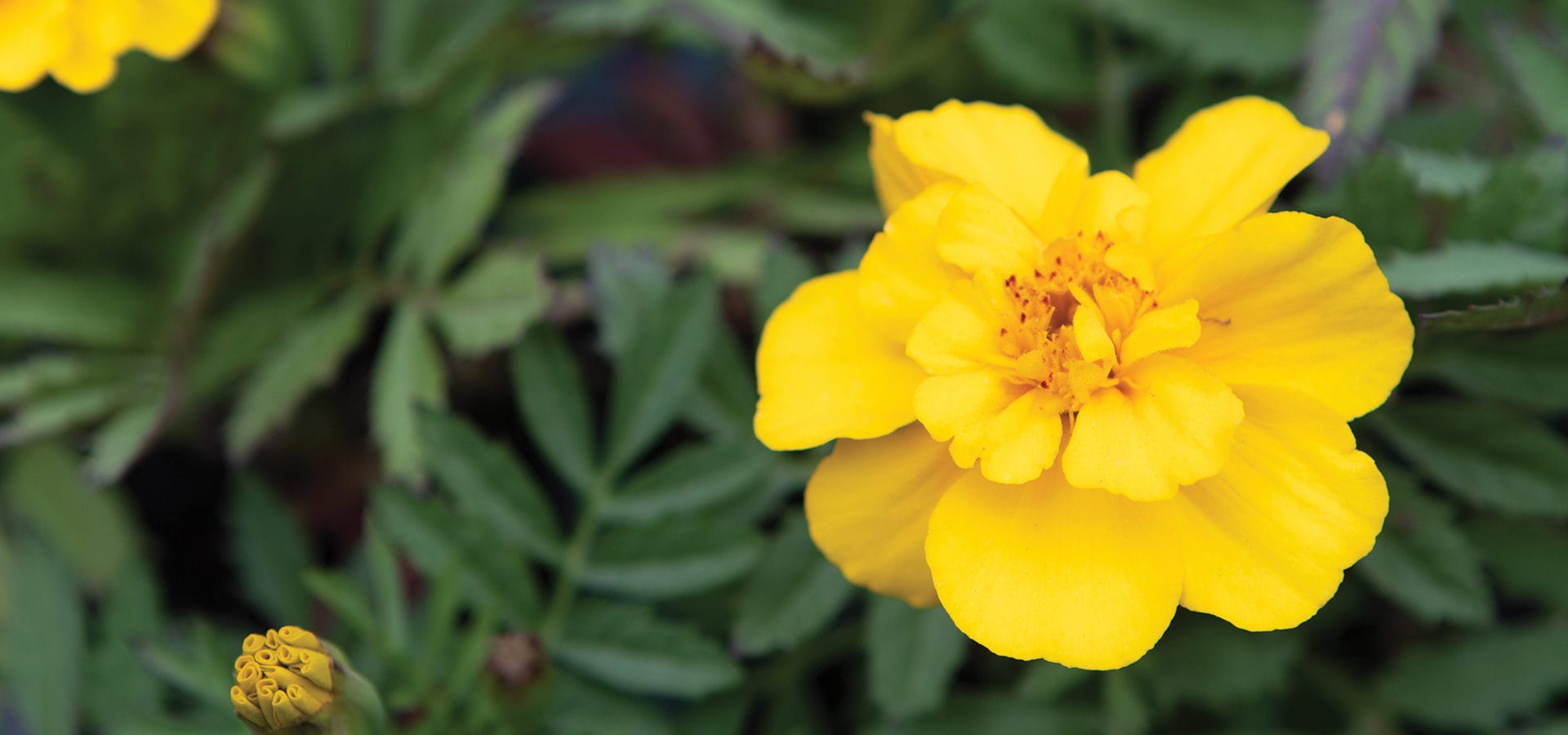I’ve been an avid gardener since moving to the Valley 20 years ago. Six or seven years ago, as a Mother’s Day gift, my husband built me a picket fence-enclosed area on our back hill to grow vegetables. In recent years, I’ve experienced lower yields and haven’t been able to figure out why. Point of fact: Tending a veggie garden is a lot of work. And, for me, it just wasn’t worth it if I couldn’t grow enough produce. I considered scrapping it altogether—until I stumbled into an incredibly bountiful garden in Studio City while at a dinner party. I asked the hostess what her secret was and she replied, “Whitney Wade.” Whitney plants gardens for homeowners and schools with her firm Plant Grow Eat (plantgroweat.com) based in Valley Village.
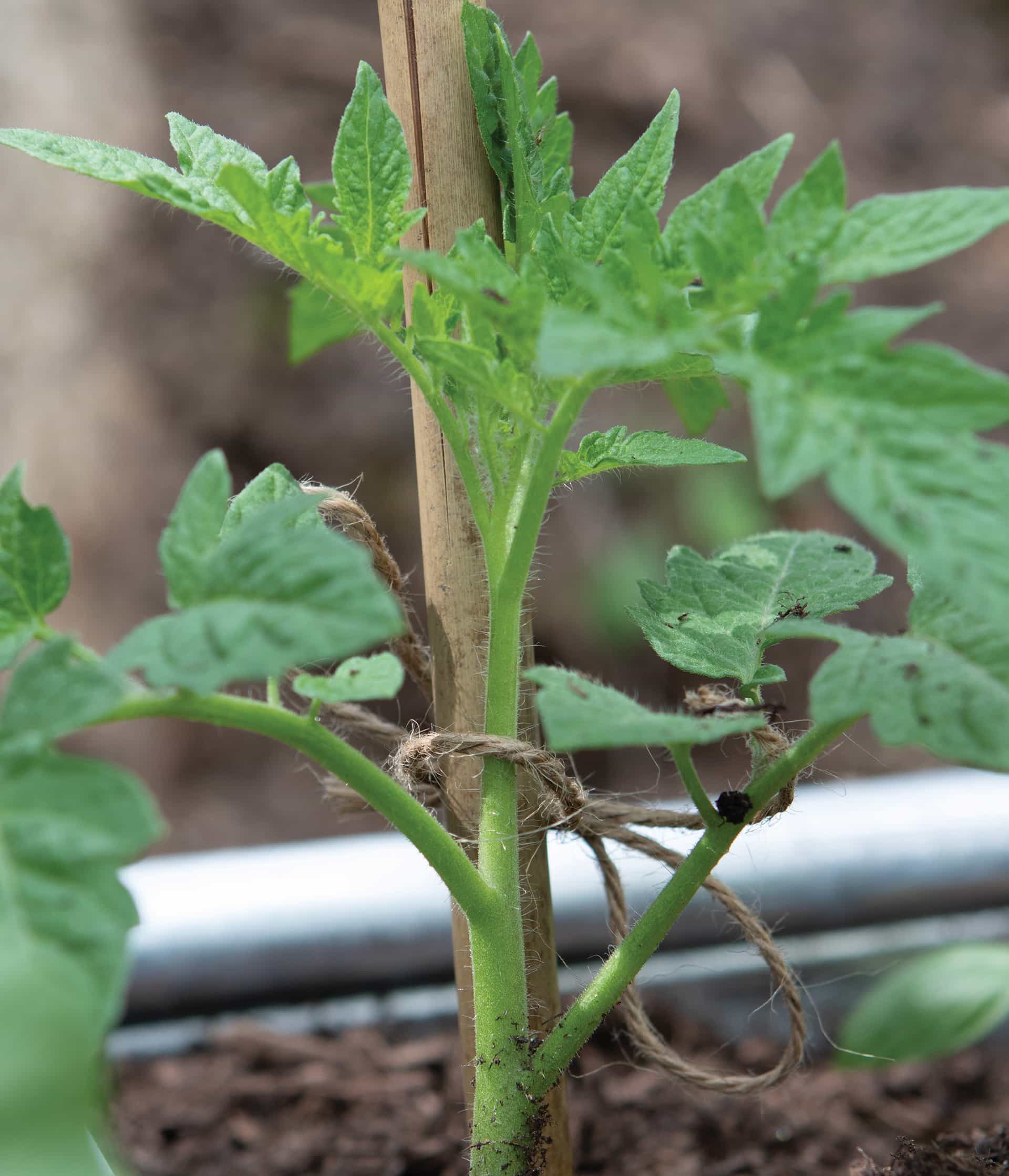
So instead of giving up, I decided to up my game by hiring Whitney to help me with this summer’s garden. At our first meeting, Whitney was able to pinpoint several problems. The roots of surrounding trees had inched their way through my planting bed, hampering the root growth of veggies. Another problem was the soil. “Valley soil, which can have limestone, sand and clay in it, is not ideal for growing vegetables. Even though Linda worked in store-bought amendment, it just wasn’t enough. Plus there were too many uncontrollable variables with pests, rats and other varmints.”
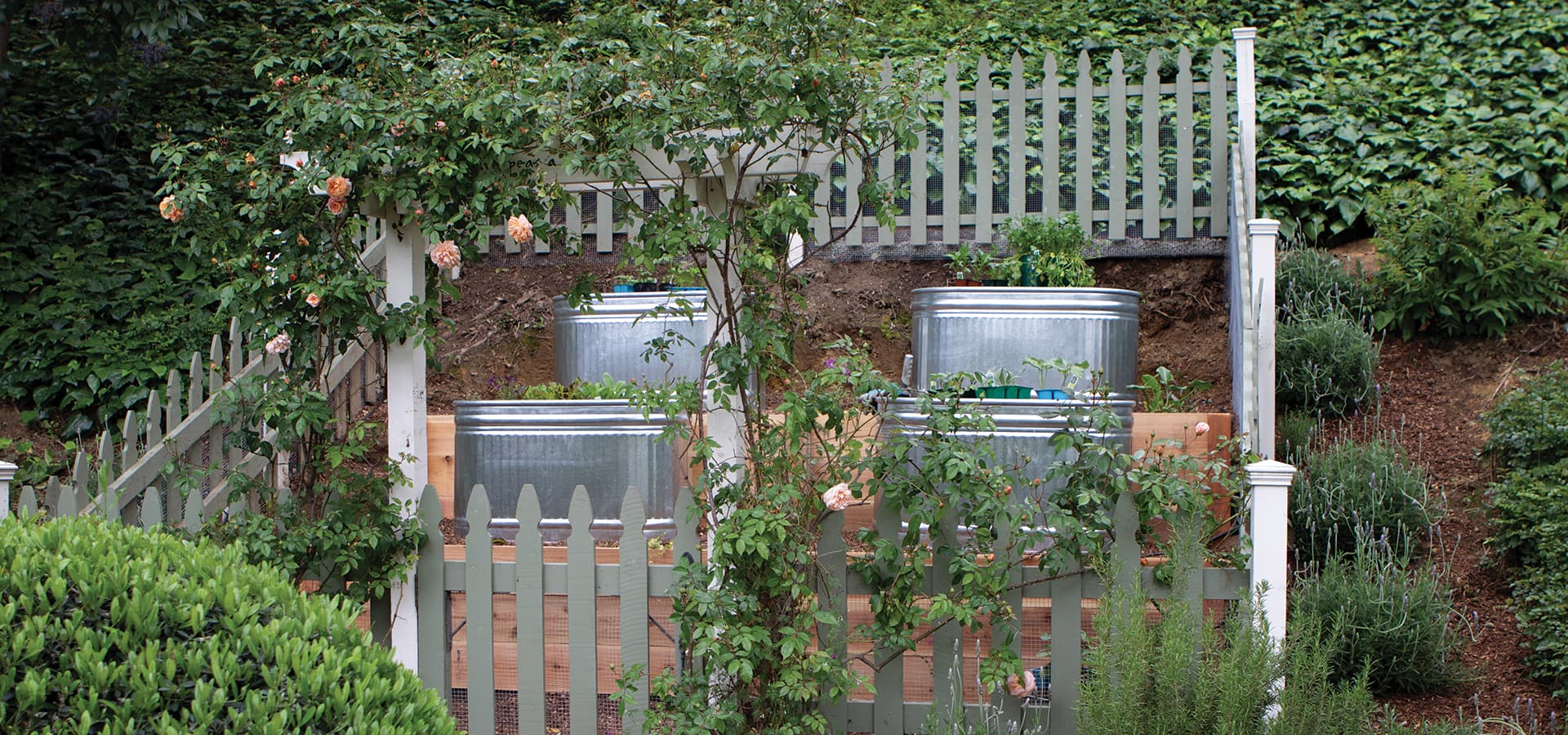
What It Takes* |
|||
|---|---|---|---|
| (4) 2 x 4 x 2 galvanized tank bins** | $500 | ||
| Bricks, ½-inch chicken wire, (4) full-circle irrigation bubblers, (6) redwood posts | $200 | ||
| (12) ½ x 36-inch rebar, staple gun, irrigation hoses and assembly parts | $365 | ||
| Flowers and shrubs | $140 | ||
| Vegetables, herbs and bag of starter fertilizer | $130 | ||
| Gravel (for base of chicken wire), pathway bark, concrete mix, cedar boards | $242 | ||
| Organic soil and amendment | $280 | ||
Total
|
$1,857 |
||
*Existing wood picket fence and labor not included.**Our bins were purchased from a local feed supply shop. Note: Use truck or large SUV and pick them up yourself to avoid the hefty shipping fee. Two bins can be nested together. |
|||
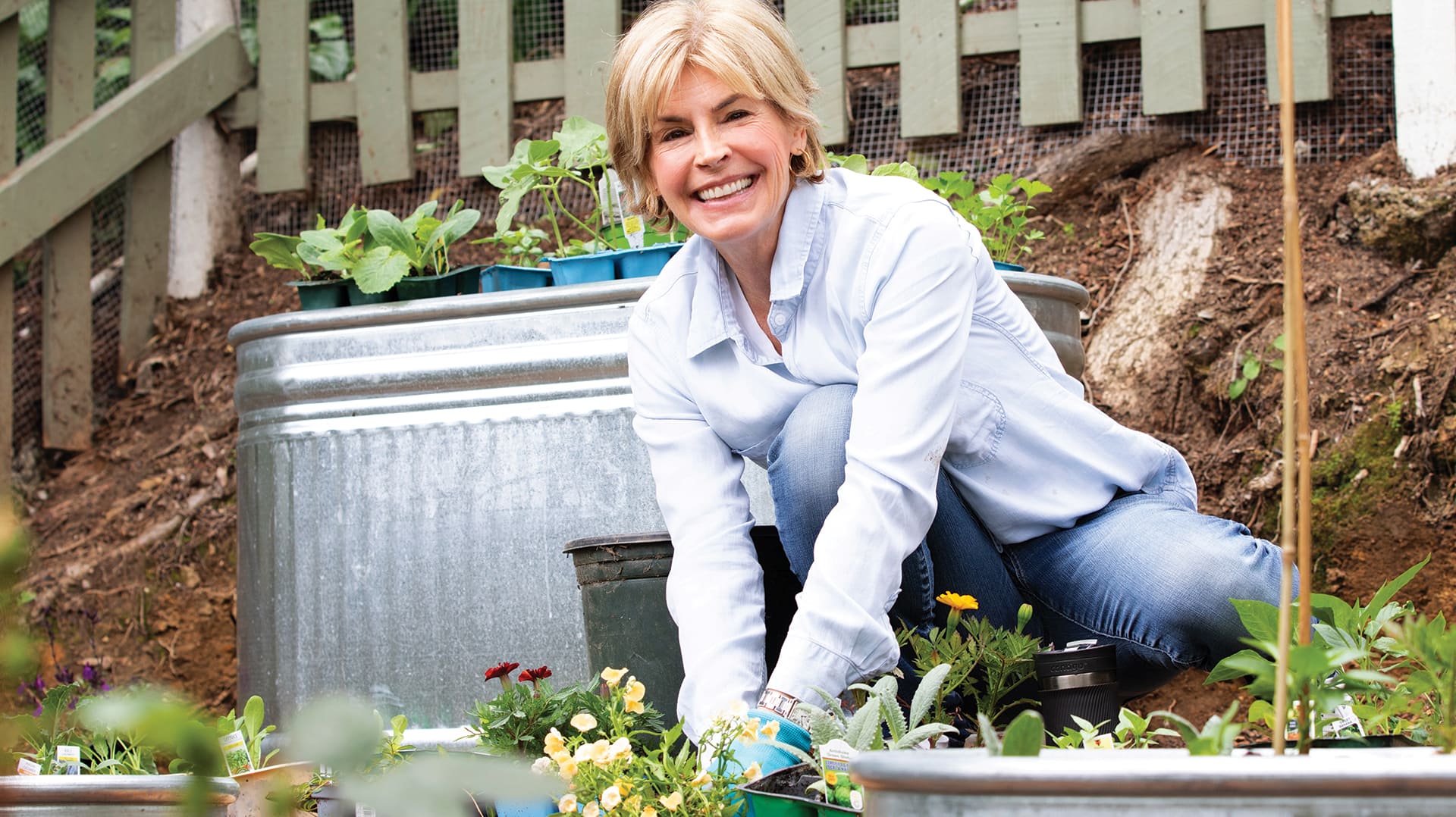
Whitney’s solution was to grow in 100-gallon galvanized bins. “The bins aren’t cheap and it takes a lot of soil to fill them. But if you amortize the cost over several years of great yields, it’s worth it. And you just have more control over the environment, and that’s a key to getting lots of produce.”
The first task: to clear, stabilize and secure the area. The three existing terraces had been weakened by soil erosion and buckled boards. The soil was re-leveled and redwood posts were cemented in to support new cedar boards, and the interior of the picket fence was lined with galvanized chicken wire. As an extra step to deter pests, lavender and upright rosemary were planted around the perimeter. “Both of those emit a scent that repels thieving critters,” says Whitney.
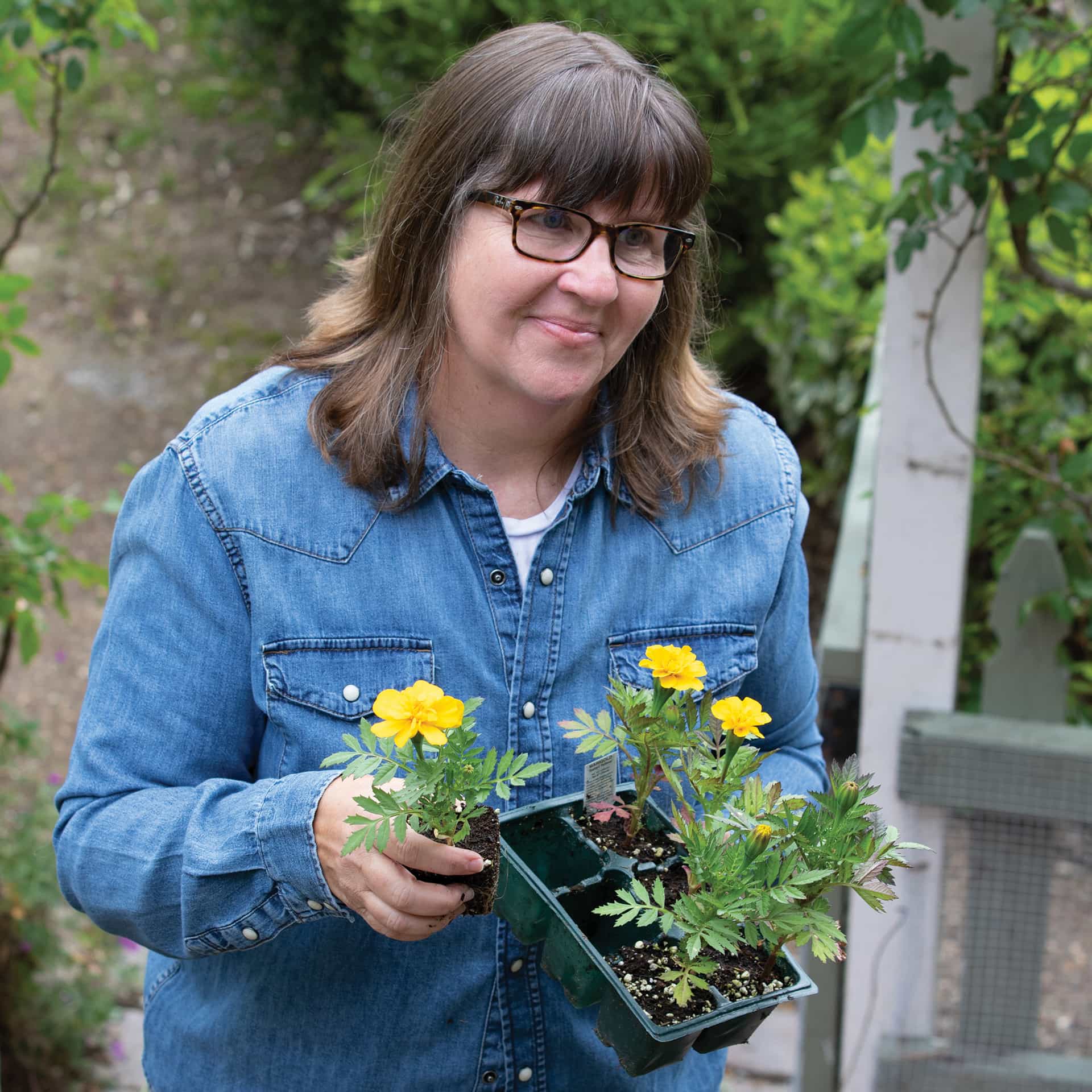
Whitney’s Plant Suggestions |
|||
|---|---|---|---|
Tomatoes |
|||
| Choose the ones with thickest stalks and the most leaves (new growth) on top. When you plant, you’ll pinch off lower leaves and put that thick stalk 6 to 12 inches deep into the ground. Thicker stalks do better underground. I prefer classic, standard varieties rather than heirlooms, which can be susceptible to disease and pests. Early Girl, Beefsteak, Big Boy and Celebrity tend to have bigger yields. Look for “non-GMO” marked on the tag. Plant carrot seeds (the idea is not to eat the carrots, but to leave them in the ground) and marigolds around the tomatoes. They’ll help the tomatoes grow, plus marigolds emit a scent that keeps bugs and critters away. |
|||
Lettuce |
|||
| Get a variety of types and keep in mind when you select a planting spot that lettuce likes a little less sun than the rest of the veggies. | |||
Cross-Pollinating Flowers |
|||
| I like marigolds, milkweed, salvias, lemon verbena (this can get 3 to 4 feet high) and basil. Choose something that will flower, like Thai and African blue basil. (You can eat some of this, too.) | |||
General Tips |
|||
| Plant a couple different varieties of vegetables, because every garden is different. What grows well in one may not do as well in another. For example, choosing two cucumber varieties—say, a bush variety and a Persian—hedges our success in case one doesn’t do well. | |||
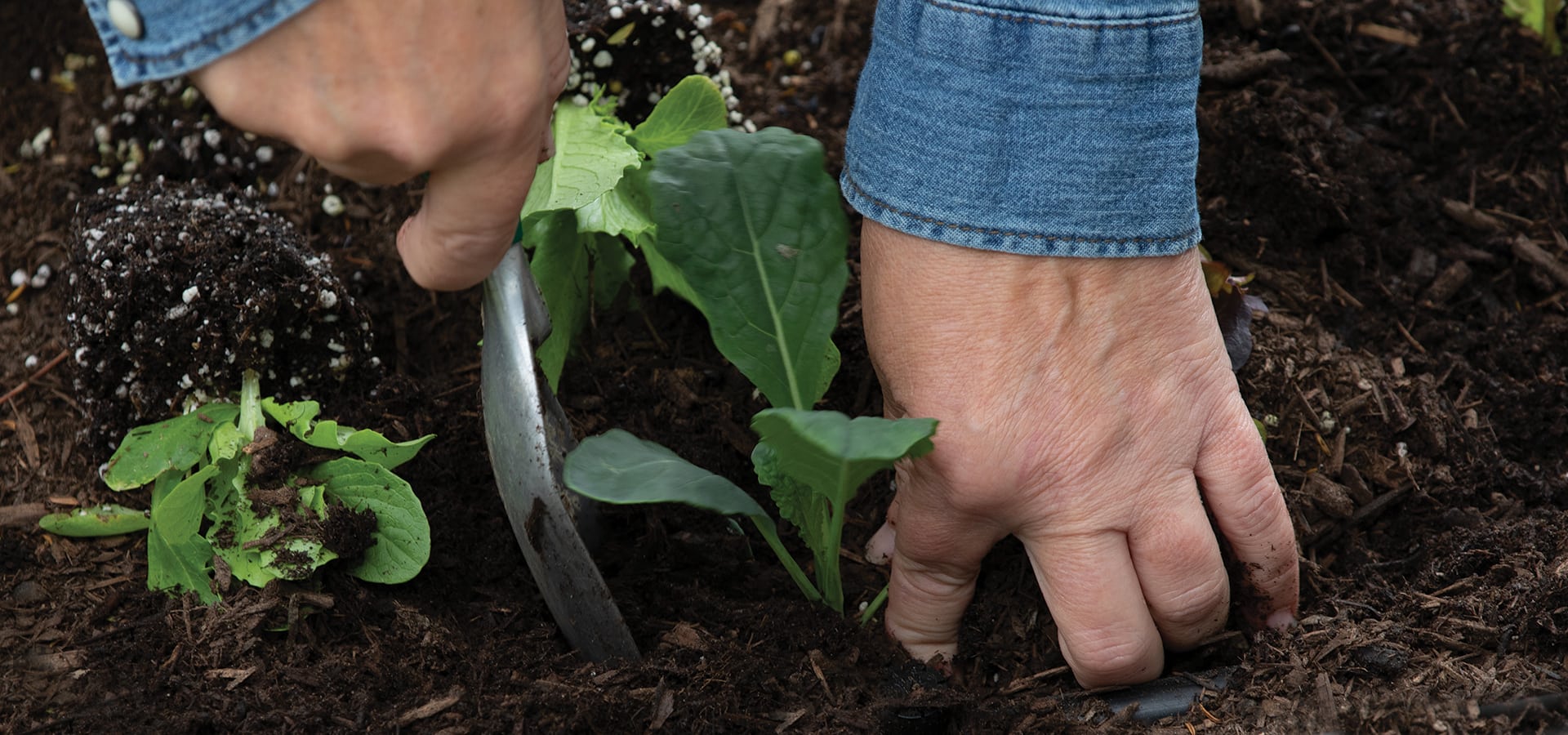
Holes were drilled in the bottoms of the bins before they were placed atop red bricks, allowing for proper drainage. Then Whitney began the meticulous task of weaving the irrigation system through the area and up through the backs of the bins. She placed a few inches of potting soil in the bottoms of the bins, and filled the rest with planting amendment. Irrigation bubblers went on top of each bin.
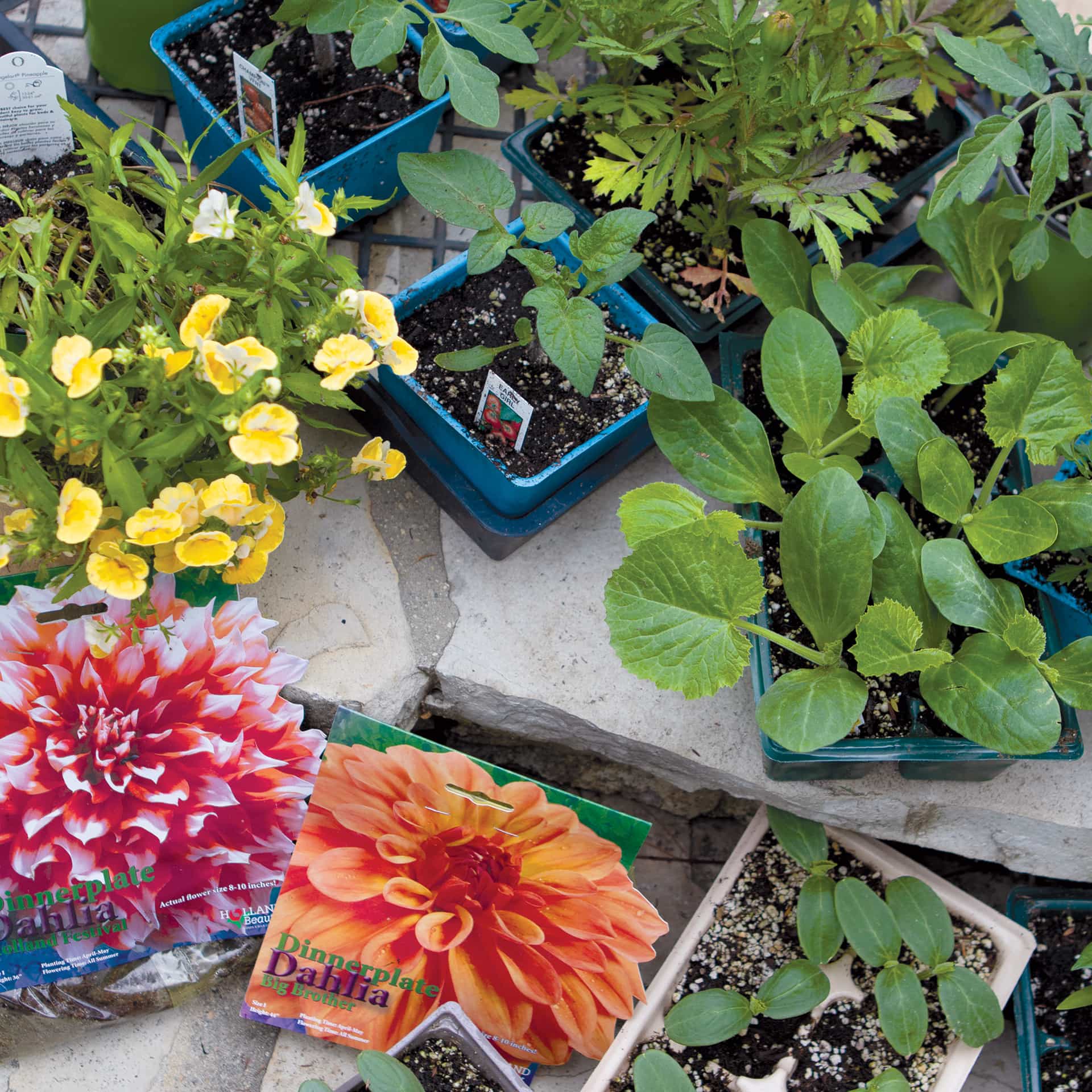
Once we’d made our trip to the nursery, Whitney’s strategy was to group the plants by theme. “One bin, for example, is Mexican-themed with various peppers and cilantro; one is Italian with San Marzano tomatoes, parsley and basil; one is filled with lettuces and one is filled with heartier veggies that might carry over to the next year, like eggplant and artichoke. Whitney also bought a few annuals and perennials. “Plants like salvia, milkweed and African basil help the vegetables grow by attracting cross-pollinating birds, bees and butterflies. Plus they just help make a garden look pretty. Who doesn’t want to work in a beautiful space?”
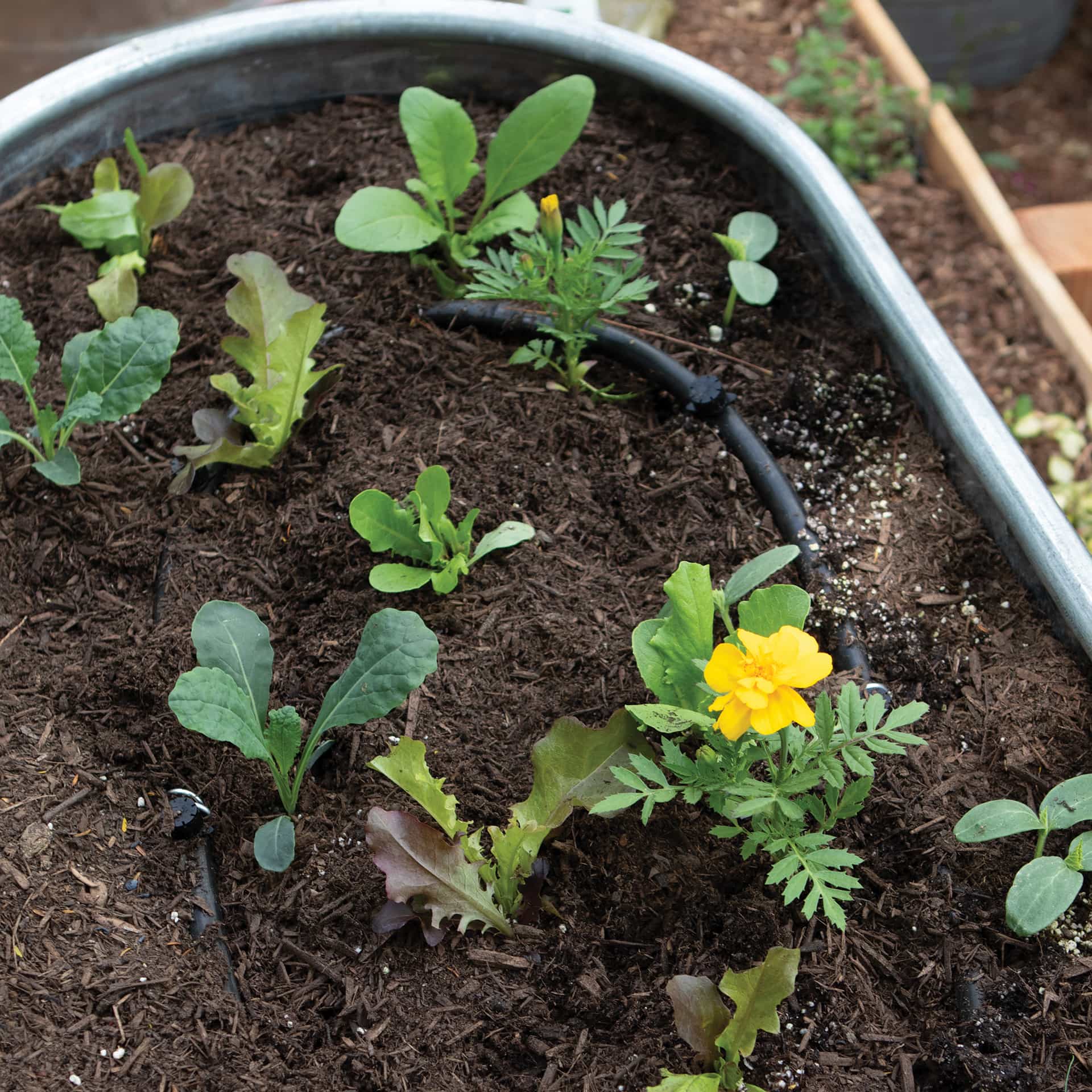
Don’t miss part two in the July issue of VB: harvesting and care of a summer garden. To watch our how-to video series on the creation of Linda’s garden, go to @ourventurablvd on Instagram and Facebook.
To watch our how-to IGTV video series on the creation of Linda’s garden, go here: Part 1 , Part 2, Part 3.
Join the Valley Community






